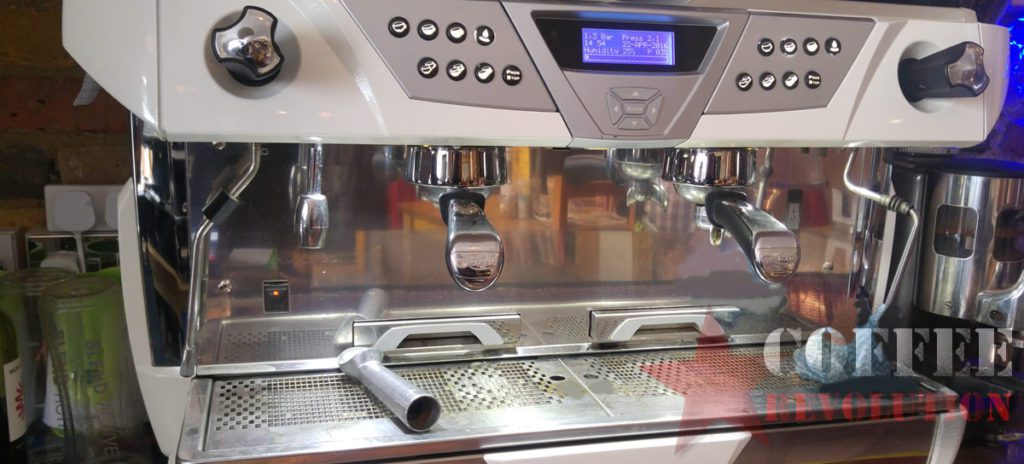Espresso machines are the heart and soul of the professional and home cafe world. But, much like cars, espresso machines of all makes and models require preventative maintenance to be done on them to ensure their lifespan.
Be it the tiny steam powered espresso machine that can be purchased at any supermarket, or the kind seen in professional cafes that cost thousands upon thousands of dollars, all of them need some love now and again. In this article, I will focus mainly on semi-automatic machines, as they are some of the most common ones used.
Descaling an espresso machine
Let’s start off with descaling, something that needs to be done to any coffee brewing machine that uses any form of water reservoir, ranging from a standard drip brewer, to Keurig machines, all the way to fancy espresso machines costing more than a new car. Descaling is what removing all the water build up is referred to.
The majority of coffee machines use a liquid descaler that can be purchased at just about any supermarket or specialty store. Though, some people are keen on using household materials, such as vinegar, to descale the machine.
For liquid descaling, simply pour a small amount in the water reservoir, and run the machine as you normally would, such as pulling coffeeless shots or brewing coffee. It is very important that after the main descaling, to run a lot of water through the machine to help clean out any chemicals that may have stayed inside.
Another form of descaling uses tablets or pills that are inserted into a spot on the machine, which are usually found on high end espresso machines that go through a ton of use on a daily basis, such as those found in cafes. After inserting the tablets into the specified slot, usually a “clean” button is pushed, and the machine will automatically take care of the rest, and run more than enough water through itself afterwords, making it ready to use.
Descaling should be done every three months or so, depending greatly on how often the machine is used, and the water quality in your area. The machines in some cafes need to have tablets run through their espresso machines up to three times a day.
Cleaning the grinder
For espresso machines with built in grinders, it is very important to clean the grinder portion every so often, to prevent clogs, and also help reduce risk of stale coffee grounds from getting into the freshly ground coffee, and eventually into the shot of espresso. To do this, you will need a small brush, and some sort of vacuum with a hose.
First, you need to completely remove and empty the bean hopper. If your hopper has the ability to close the outlet where the coffee beans come out of, that can help reduce waste, and make this process easier.
Once the hopper is removed, use the vacuum to suck up any coffee beans that may have remained in the chute, and then use the brush to loosen any coffee grounds, while sucking them up in the process.
Then, use the brush and vacuum on the port where the coffee grounds come out of. The goal is to clean out all the excess coffee grounds you can. Another step that is used to clean out a coffee grinder, is to run coffee grinder cleaner through it.
Coffee grinder cleaner consists of small beads that are ran though the grinder that absorb any oils that may be in it, as well as push out any stale coffee grounds that may be stuck inside, and unreachable. Some people use plain white rice to accomplish this, and it works pretty much exactly the same, just make sure to run a few grams of coffee through afterwords to clean out any rice dust.
General espresso maker cleaning
Other preventative maintenance includes cleaning the steam wand, the portafilter, and the spout of the espresso machine. For cleaning the spout, simply take a damp towel and a small brush, and clean where the portafilter twists into, and then let a few ounces of hot water run through the machine without the portafilter attached, and you’re good to go.

The portafilter is pretty simple to clean, only requiring a quick wash with warm and soapy water. As for cleaning the steam arm, simply use an opened up paper clip to clean out any buildup from the hole or holes, and flush with tons of steam. For clogs that are a bit more stubborn, soaking the steam wand in a cup of water works great for loosening anything inside of it.
If your espresso machine begins to act odd, it is highly suggested to contact the manufacturer to see what they say, as opposed to trying to fix it yourself, especially if you are not quite sure how the machine works. Contacting the manufacture will also prevent any warranties from being voided by opening up the machine.
